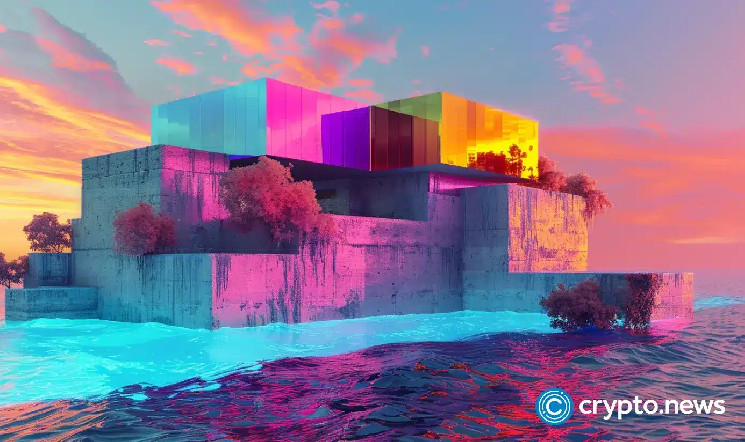Disclosure: The views and opinions expressed here belong solely to the author and do not represent the views and opinions of the crypto.news main article.
Since the first coin offering in 2017, the Tezos blockchain has become the art world’s favorite for its energy efficiency and low costs. AI artists, including Refik Anadol, an internationally known media artist, director and pioneer of data and machine intelligence aesthetics, use Tezos to conduct peer-to-peer transactions and deploy smart contracts. The token is listed on crypto exchanges as Tezos (XTZ).
You might also like: Extending mobile services with device licensing and crypto | Opinion
In addition to being part of Art Basel since 2021 and collaborating with environmental gallery Serpentine Arts Technologies since 2023, during this Plastic Free July Tezos will be part of Ribela Love Nature for the first time, a sustainable open-air techno event of art and music , featuring over 100 different artworks from over 30 visual artists, over 20 NFT artworks for sale, and music in over 15 live acts and DJ sets.
Plastic Free July draws attention to the impact of plastic waste on nature. The ‘Plastic Free July’ campaign emerged in Australia in 2011 to draw attention to the global problem of plastic waste, which causes serious problems for animals, nature and human health. The award-winning campaign is a major initiative of the Plastic Free Foundation, which is working towards a vision of a world free of plastic waste, as outlined in the ‘2023 Impact Report’.
The Plastic Free July campaign was instrumental in the adoption of the world’s first Plastics Convention, which was supported by 175 countries at the United Nations Environment Program (UNEP) meeting in Nairobi in 2022. UNEP’s Intergovernmental Negotiating Committee on Plastic Pollution is still negotiating the terms so that it can be implemented as early as 2025.
My Plastic Free July art exhibitions to draw attention to the harmful effects of plastic pollution on marine animals are being held in two museums:
- Putnam Historical Museum – Healing Waters by Selva Ozelli
- Maritime Museum Havre de Grace – Moody Blue Crabs by Selva Ozelli
In parallel with participating in the sustainable techno event, Tezos blockchain platform will create. and an OP blockchain-based, cloud-like backend for all kinds of applications.
Scaling the usefulness of blockchain is crucial for widespread adoption. After all, the fastest and most cost-efficient blockchain is useless if people have nothing to do or nowhere to go. And they won’t have those things unless someone builds them on Jstz, an L2 rollup being built on Tezos to enable developers to use JavaScript and its vast resources, like JavaScript APIs, proven JS tools, an npm ecosystem and libraries with the best benefits of web3, with built-in identity, wallet and payments Jstz GitHub repository.
On June 28, 2024, the U.S. Department of the Treasury and the U.S. Internal Revenue Service issued final digital asset reporting regulations requiring broker reporting for centralized exchanges and hosted wallet providers, with expanded rules under which transactions in digital assets, including NFTs, will happen. are reported in the US. However, it has set aside related rules for decentralized finance and unhosted wallets while it continues to review 44,000 responses to the agency. Defi operations and non-hosted wallet providers will have to wait for their own rules later this year.
The final regulations will take effect for transactions beginning in 2025 and will require digital asset brokers to monitor the cost basis for customer tokens starting in 2026. They will also have to file 1099-DA forms like their traditional investment firm cousins, with a $600 annual threshold for NFT proceeds before they must be reported.
The final regulations provide NFT platforms with needed clarity on their reporting obligations while creating transparency for both artist taxpayers and the IRS when it comes to tax reporting and compliance. It is also an essential step in closing the estimated $50 billion crypto tax gap and will further legitimize digital assets. Artists now know what to report for activities conducted with an NFT digital asset broker platform, and the IRS knows what to expect in terms of tax returns.
Read more: A digital asset tax year begins | Opinion

